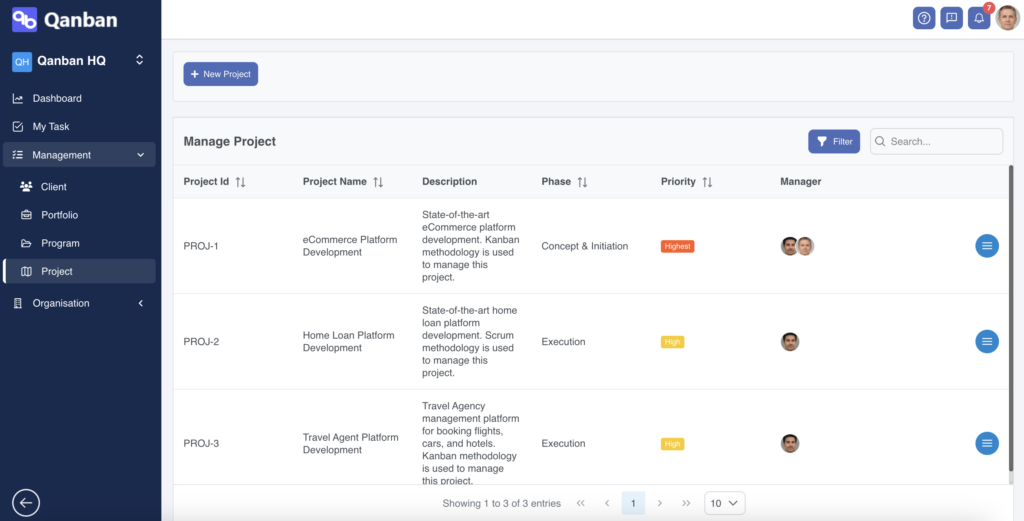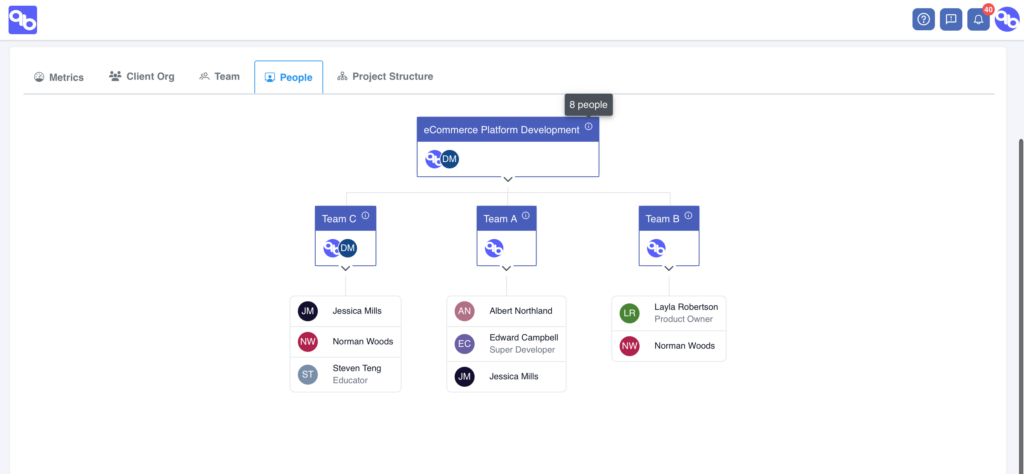Meeting Account Manager needs
In the business world, success depends on more than just completing projects – it’s about building lasting relationships. As Account Managers, our main goal is to manage clients well and build strong, long-term connections. This means understanding their needs at every stage of a project, from start to finish. We’re also responsible for being the main contact for clients, making sure projects stay on track, and are completed on time.
During our interview, an Account Manager expressed frustration with alignment challenges, including:
- Slow processes from prospecting to sales to engineering, causing lost deals to competitors with faster processes.
- Bottlenecks delaying the identification and resolution of key issues, leading to delayed customer requests.
- Poor communication flow from sales to engineering.
- Limited visibility into the engineering team’s activities.
- Underestimation of sales’ importance for the organization’s survival.
- Management’s difficulty tracking multiple initiatives, with manual processes consuming significant time and effort for insights.
Do any of these resonate with your experiences? If so, discover how Qanban addresses these challenges to enhance team alignment so that you could fulfils your duties and obligations, thus ensuring client satisfaction.
How Qanban addresses your challenges?
Alignment on client level
Qanban keeps track of all your clients. You can see which account manager handles each client organization, and also the representatives for each client. This helps you know who your main contacts are.


Also, Qanban lets you link each project to its client organization, so you can see who the projects are for. In each project, you can see the main needs represented in epics and features for the customer project and who’s responsible for each one. As an Account Manager, this gives you full control to check if your requests have been handled.


Alignment on project level
As an Account Manager, providing feedback is essential to ensure project teams align with customer needs. In Qanban, every project includes a description and leadership details, clarifying roles. You can assign up to three managers per project, such as Project Manager and Account Manager. This feature proves invaluable where rapid access to project information is crucial for addressing urgent inquiries.


In each project on Qanban, you can see details about the client organisation, including the sponsor and team leaders. Knowing who leads each initiative helps managers give clear instructions and communicate organisational goals effectively.
To maintain transparency and alignment with the project scope, Qanban offers a project structure feature that showcases all necessary work items for project completion. Additionally, within each project, the “Project Deliverables” provides a summary of the required larger epics and features requirement to be delivered while the “Project Work Items” feature enables Account Manager, Product Owners or Business Analysts to create smaller user requirements and tasks before assigning them to respective teams for execution. This ensures that requirements are not overlooked, and project teams can clearly see and track them.
Qanban recognises that each project may require a customised process to accommodate its evolving requirements. It supports the breakdown of statuses into stages such as Analysis, Work Breakdown, Workshop, Development, and more, allowing for greater flexibility and more granular process management in the project.



Alignment on team level
Understanding each team’s contributions to the project is easy with Qanban. Just click on the team in the project, and you’ll see their Kanban board, showing all their current tasks. This helps you track if they’re following the project plan and meeting project goals.
Qanban requires every team on a project to follow the project’s methodology, whether it’s Scrum or Kanban. Scrum involves planning work for a set time (usually every two weeks), great for product development, while Kanban allows for a more flexible approach, better for business support tasks.
Qanban knows that each team may need different processes based on their experience level. It lets you break tasks into stages like Analysis, Ready For Development, In Development, and In QA, giving teams flexibility. Managers can see these processes for each team, spotting any differences across teams and ensuring everyone follows essential procedures. With this info, managers can enforce a standard process for all teams or let teams decide, as long as they follow essential rules.
While teams can create stories and tasks on their own, Qanban requires them to link these items to specific project epics or features. This makes sure everyone works on the right tasks, reducing wasted effort. It also helps managers understand what tasks are needed for each epic or feature.

What’s Next?
Discover the power of Qanban today! Follow our Linkedin and visit our homepage to try Qanban for FREE!
Create your free account today!
Free forever. No credit card required.
